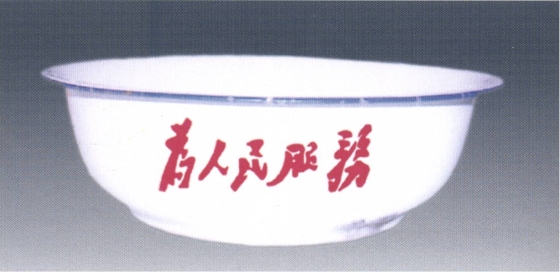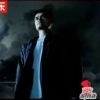Illustration:
ill. 4.11 d (set: 4.11)
Genre:
article of daily use, washing bowl
Material:
scan, paper, colour
Source:
Wenge yiwu 2000: Wenge yiwu shoucang yu jiage 文革遗物收藏与价格 (An archive and price list of relics from the Cultural Revolution), edited by Tie Yuan 铁源, Beijing: Hualing, 2000:134., Heidelberg catalogue entry
Inscription:
为人民服务
Keywords:
Lao sanpian, Mao´s words, Mao Zedong Thought, Three Old Articles, Three Constantly Read Articles, Serve the People, everyday life
Washing bowl with Serving the People (Wei renmin fuwu 为人民服务 (洗碗))

Not only taught in schools, the Three Articles were also perused at work and during people’s free time, as the Chinese population was flooded with quotations, emblems, and heroes from the stories. The People’s Daily would print stories and songs based on the Three Articles. There were even vinyl records with recitations for those who could not read (CL 1967.4:137). The stories and their heroes would appear and reappear on posters; in poems and plays; in films, model works, and songs; and on such daily use items as Jingdezhen porcelain, cushions, washing bowls and mirrors, badges, and fingernail clippers as these illustrations show. Accordingly, the three stories and their heroes—the Canadian doctor Norman Bethune, the Communist fighter Zhang Side, and the Foolish Old Man—became household names during the Cultural Revolution (Bergman 1984, 49), “well known to every family, everywhere, in the cities and the countryside” (家喻户晓). (See also DACHS Continuous Revolution).






































